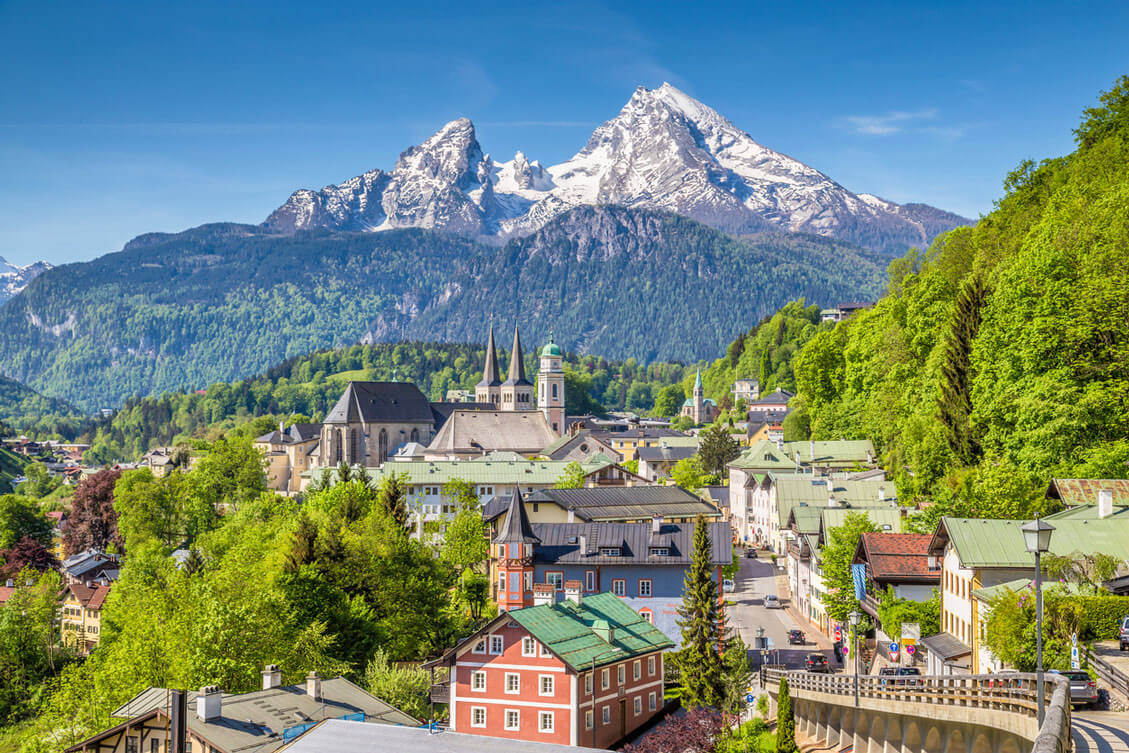1/1 Oops. Incorrect.
0%
0pts Earned
0/1correct
26/26
Áo dài, meaning “long skirt,” is the national dress of what country?
The Vietnamese “áo dài” is characterized by a long, fitted silk dress worn over long pants. Aside from the elegant dress, the other recognizable component of this classic outfit is a conical hat called a “non la.” Early forms of this dress originated in the late 18th century, and by the 1930s, the modern version (one that is still worn today) emerged.
Source: Vietnam TourismVietnam
51%
Philippines
17%
New Zealand
5%
Mongolia
27%
25/26
Gákti, worn by the Sámi peoples of Lapland, is often made from what?
The Sámi are an Indigenous group from the Lapland region of northern Finland, as well as parts of northern Norway, Sweden, and Russia. The “gákti,” the traditional unisex garment of the Sámi, is typically made from reindeer skin and worn during ceremonies or while herding reindeer. While the design of gàkti can vary by region, most gákti feature fringe, silver jewelry, and some incorporation of red and blue (the primary colors of the Sámi flag).
Source: Fodor’sAlpaca
21%
Reindeer
73%
Python
1%
Fox
5%
24/26
Characterized by ear flaps, the chullo hat is from what Andean country?
The chullo hat originated in Peru and the surrounding Andean mountain region of South America. This tight-fitting cap features ear flaps with straps on each end that can be tied together underneath the chin. Traditionally, chullos are made from warm material such as wool from the sheep, llama, alpaca, or vicuña (a small, wild animal similar to the alpaca).
Source: Aracari TravelNew Zealand
6%
Peru
78%
Uruguay
10%
Honduras
6%
23/26
Tall lace coiffes are traditional in Brittany, a region of what country?
In Brittany, a region in the northwest corner of France, tall lace coiffes and headdresses are the most distinguishing feature of the local isolated villages' fashion traditions. Setting up the full coiffe takes nearly half an hour and is difficult to manage in the windy edge of the North Atlantic, but the women who wear the lace tower believe that protecting their fashion heritage is worth the hassle.
Source: National GeographicFrance
83%
Canada
4%
Sweden
7%
New Zealand
6%
22/26
What hat takes its name from a city in Morocco?
The fez hat took its name from the Moroccan city of Fez, the source of the crimson berry once used to dye the hat's felt. Historically, the fez was most popular in the massive territory controlled by the Ottoman Empire in the 1800s. Eventually, though, the red, tasseled fez fell out of style and was even once banned in Turkey after the dissolution of the Ottoman Empire.
Source: History of HatsStetson
5%
Fez
81%
Rabat
11%
Homburg
3%
21/26
In Nigerian fashion, what is a dashiki?
In the Hausa and Yoruba languages, "dashiki" translates to shirt. All across West Africa, men commonly wear these colorful shirts. (In East Africa, they are known as "kitenges.") There are both formal and informal versions of dashikis, but they are almost always highly detailed and eye-poppingly colorful. Often, dashikis are accompanied by pants and a brimless Kufi cap, completing the look.
Source: The Culture TripA shirt
40%
A dress
32%
A hat
10%
A cape
17%
20/26
The "suit of lights" is most often worn by what professionals?
Known in Spanish as "el traje de luces," the suit of lights is the traditional outfit worn by a torero, or bullfighter. The extravagant and elaborate suits are often completely handmade and can be covered in ornate embroidery, beading, and up to 12 miles of gold thread. This needlework is especially challenging, as the traje de luces is usually seven layers thick so as to protect the torero from the horns of bulls.
Source: Phoenix Art MuseumTrapeze artists
14%
Spelunkers
30%
Bullfighters
50%
Train conductors
6%
19/26
Chamantos are ponchos worn by "huasos" in which country?
Chamantos are ornate silk ponchos traditionally worn by Chilean cowboys, also known as "huasos." Each year during Chile's rodeos, the huasos wear their chamantos as formal outfits. The garments are true works of art, sometimes taking months of full-time work to weave from hundreds of thin silk threads. Each poncho features a complex design, often including the Chilean national flower, the copihue, and is usually made double-sided so that huasos can wear them during the day and night.
Source: AFARChile
82%
Egypt
3%
Turkmenistan
8%
Portugal
8%
18/26
Beaded necklaces are a custom of the Maasai people in which country?
The Maasai people of Kenya and Tanzania are known in the fashion world for their striped shúkà wraps, piercings, stretched earlobes, and most famously, their beadwork. In a tradition passed down through generations, Maasai women learn to bead from a young age and create ornate patterns and jewelry designs. In Maasai culture, beadwork can represent beauty, tradition, strength, and even social status. In modern times, the work has also given the Maasai an economic boost, as tourists from around the world value the handmade pieces for their detail and allure.
Source: WE.orgAzerbaijan
4%
Sri Lanka
17%
Namibia
20%
Kenya
59%
17/26
In which Spanish region are flamenco dresses traditionally worn?
In addition to being one of the most recognizable fashion statements in Andalusian culture, the traditional flamenco dress is also an important part of the art of flamenco dancing. Performers wear the flashy outfits during their shows, spreading and flipping the hundreds of ruffles for a fiery display of passion. Flamenco dresses first entered the world of Andalusian fashion in the 1800s, having been introduced to the southern Spanish region by women in the area. The outfits eventually became the official dress of Seville's April Fair and helped popularize the dance.
Source: El Flamenco En SevillaCatalonia
34%
Valencia
36%
Andalusia
28%
Galicia
3%
16/26
Hanbok is the colorful national dress of what country?
The traditional hanbok is a symbol of South Korean culture, often worn for formal occasions and holidays. The design features three staple garments — a jeogori (jacket), baji (trousers), and chima (skirt) — all with a focus on softness and elegance. The vibrant colors correspond with the five elements of yin-and-yang theory: white (metal), red (fire), blue (wood), black (water) and yellow (earth).
Source: The Culture TripSouth Korea
55%
Bhutan
22%
Singapore
20%
Armenia
3%
15/26
Hawaii has a national holiday dedicated to what fashion piece?
Leis are synonymous with Hawaiian culture. The necklaces are made from local flower blossoms, such as ginger and orchids, and often given to guests as a sign of hospitality. Indigenous Hawaiians began this tradition centuries ago by wearing woven necklaces made of ferns, dried shells, fruit, beads, and feathers, used as a personal fashion accessory. Hawaiians celebrate Lei Day every May 1 with festivals.
Source: City & County of HonoluluSarongs
3%
Grass skirts
31%
Leis
53%
Aloha shirts
14%
14/26
What hat is symbolic of the Australian outback?
Often made of rabbit fur felt or wool felt, the slouch hat is officially called the “khaki fur felt hat” (KFF), but Australians call it the “slouch” in reference to its sloped brim. The slouch looks a lot like an American cowboy hat, except one side of the slouch's brim is turned up and attached to the crown.
Source: Australian ArmyBoonie
45%
Sou’wester
15%
Slouch
22%
Trapper
17%
13/26
What 1920s cowboy fashion staple originated on Texas ranches?
Texan 10-gallon hats feature a broad rim and a high crown, but their name is misleading — they can only hold a few quarts of liquid, not 10 gallons. Their name likely came from across the border from the word “galóns,” a braided headband that Mexican vaqueros wore on their sombreros.
Source: History.comBolo ties
17%
Cowboy boots
16%
10-gallon hats
50%
Chaps
16%
12/26
What is the Islamic headwear that covers the hair but not the face called?
There are many different headscarves and face coverings worn by Muslim women, depending on where they live and what branch of Islam they practice. In the Western world, the most common Muslim headscarf is the hijab, which covers the hair and neck but leaves the face exposed. On the other side of the coverage spectrum is the burka, which shrouds a person's entire body, leaving only a mesh screen to see through. Traditionally, these coverings come from religious interpretations of statements in the Quran.
Source: BBCNiqab
4%
Burka
29%
Hijab
64%
Keffiyeh
3%
11/26
Despite their names, Panama hats originated in what country?
True Panama hats are made entirely in Ecuador, a South American nation a few hundred miles away. During the 1800s, when the Panama Canal was under construction, Ecuador exported thousands of their iconic hats north to Panama and from there many were shipped ever further internationally, leading much of the world to believe Panama to be their place of origin.
Source: Magnolia PanamaIran
2%
Norway
7%
Ecuador
87%
Madagascar
4%
10/26
What type of shoe was invented by Indigenous peoples of North America?
The moccasin is a soft leather shoe that was invented by Indigenous groups in North America using their natural resources. They were eventually adopted by fur traders, hunters, and settlers — leading to a modernized moccasin in the early 20th century, worn as a sport or casual shoe. The earliest moccasins could be hard or soft soled and were adorned with beading, embroidery, and other embellishments.
Source: BritannicaSabot
1%
Gomusin
1%
Moccasin
97%
Espadrille
1%
9/26
Traditionally, Dutch clogs are made of which material?
Known as "klompen" in Dutch, wooden clogs have been used in the Netherlands since as far back as the 13th century. They were designed as protective footwear for trade workers in factories and farms, leading to their evolution from simple, wooden-soled shoes to fully wooden clogs. The European Union has even declared them official safety shoes due to their protective design.
Source: Dutch ReviewRope
0%
Iron
0%
Leather
2%
Wood
97%
8/26
What are lederhosen?
Lederhosen are classic male garments of Bavarian tradition. They are a style of short leather breeches with suspenders, generally worn during Oktoberfest celebrations. Lederhosen began as work wear for peasants in the 18th century before becoming fashionable for nobility. A few decades later, the tradition gave way to trousers and pantaloons, but then Oktoberfest came along. The first celebration took place in 1887 and, in an effort to preserve Bavarian culture, lederhosen and dirndls (the female counterpart to the style) were named the official garb for attendees — a rule that still applies today.
Source: Oktoberfest HausHats
2%
Shorts
72%
Shoes
5%
Socks
21%
7/26
What type of hat was the signature style of 19th-century British elite?
Characterized by a round crown and narrow brim, the bowler hat was invented in London in 1849 and is still worn today. Its inventors, Edward Coke and Thomas Bowler, went to Lock & Co., a famous London hat maker, with an idea for a design: a sturdy, low hat that wouldn’t fly off in the wind. Practical yet stylish, the Bowler hat’s popularity soon took off in London and elsewhere.
Source: Discover BritainFiddler
2%
Cossack
3%
Fedora
22%
Bowler hat
73%
6/26
Sherpa material is named after mountaineering people from what region?
Sherpa is a thick, soft material used around the world to make jackets and hats. It looks similar to sheepskin, but is more lightweight than the real thing. Its name comes from the Sherpa people, who live in the Himalaya Mountains near the border of Nepal and Tibet.
Source: Cambridge English DictionaryAndes
8%
Himalayas
86%
Alps
5%
Rockies
0%
5/26
Saris are most commonly worn by women from which country?
Saris (also spelled sarees) are the main traditional outer garment worn by Indian women. They are usually made of brightly colored fabric and wrapped around the body with the leftover drapery hung over the shoulder or on the head as a hood. Saris have long been part of Indian fashion, with sculptured reliefs depicting men and women wearing the garments as early as the second century BCE.
Source: BritannicaIndia
95%
Australia
1%
Argentina
1%
Morocco
3%
4/26
Which is the name of a traditional Japanese dress?
Japanese kimonos are based on ancient Heian period styles and evolved most recently from a unisex garment called the kosode, which literally means "small sleeves." During the Meiji period, which began in 1868, this garment became the kimono and was primarily worn by women. Kimonos are traditionally worn with the left side folded over the right, a broad sash called an obi across the waist, and accessories such as zōri sandals and tabi socks.
Source: JSTOR DailyZōri
1%
Rikishi
1%
Kimono
98%
Hanbok
1%
3/26
A beret is a traditional hat from which country?
Berets have a history that traces back to the Bronze Age, when ancient Greek and Roman citizens wore floppy sun hats and conical caps that combined and evolved to become the beret we know today. The felt headpiece took its current shape in the 14th and 15th centuries, when members of the lower class donned them to cover their heads outdoors. A few centuries later, the black beret became a fashion statement for French women, which is how many people picture it to this day.
Source: MicSweden
1%
Wales
4%
Italy
4%
France
91%
2/26
Where were modern blue jeans invented?
While denim as a fabric has existed for decades, jeans as we know them today didn’t appear until the late 1800s in Reno, Nevada. A Latvian immigrant tailor named Jacob Davis came up with the idea of adding metal rivets to strengthen the weak points of miners’ trousers so they wouldn’t rip so often. He partnered with businessman Levi Strauss and moved to San Francisco, and the pair received a patent for the invention on May 20, 1873.
Source: Smithsonian MagazineTokyo, Japan
8%
Istanbul, Turkey
6%
Reno, Nevada
66%
Calgary, Canada
20%
1/26
A kilt is a garment from which country?
Today, a kilt is meant to signify masculinity in Scottish culture — especially in the Highlands. Originating as a daily garment, the kilt is now embraced as part of a uniform, formal outfit, or casual ensemble. In the early 1700s, the kilt became the garment we know today, evolving from a belted plaid wrap that emerged in the late 16th century. Now, the kilt is considered an integral part of Scottish national dress.
Source: The MetCanada
1%
Scotland
98%
South Korea
1%
Turkey
0%
Play Quizzes By Category
Play A Trending Quiz
Trending, related and recent quizzes you may be interested in






